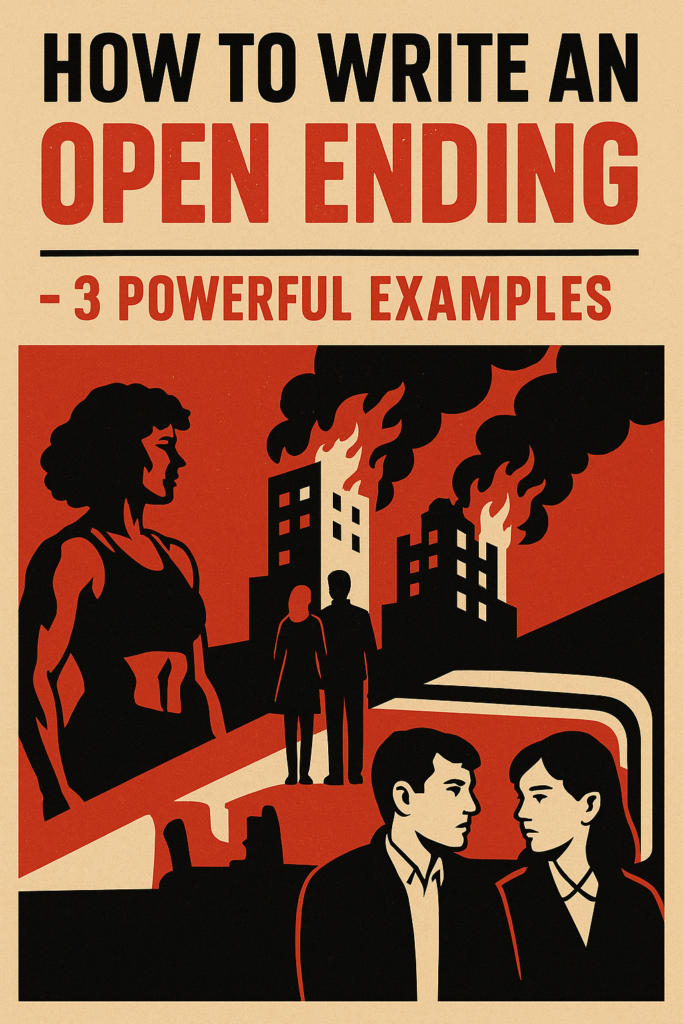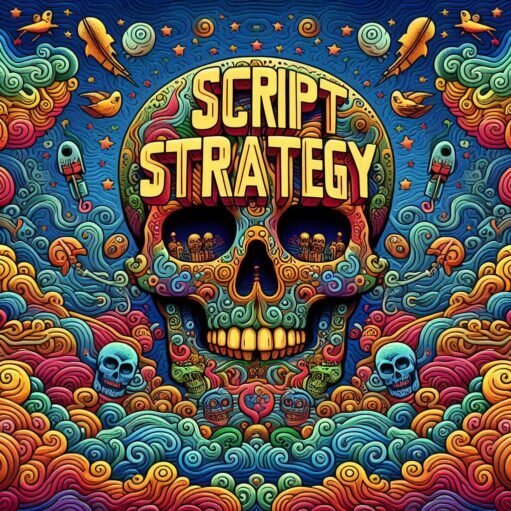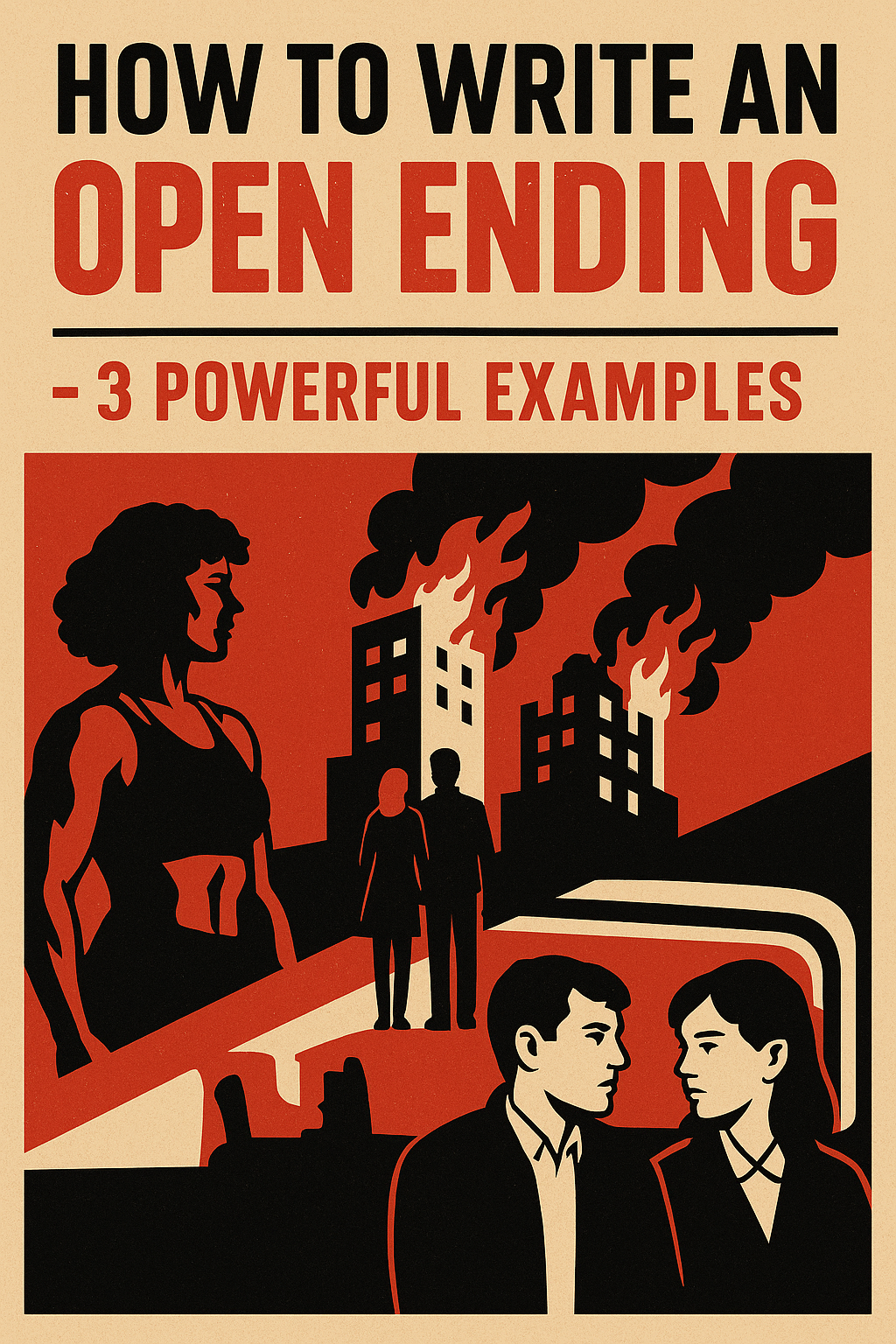How to Write an Open Ending: 3 Classic Examples

To hell with Aristotle–resolution is overrated.
Open endings don’t mean laziness or indecision. They give us reason to project or reflect or wonder. These are the sorts of endings that don’t promise things will be OK–even if we know that something has fundamentally changed.
As the credits roll, the characters may have solved their old problems, but now they face “new and better problems,” as a mentor used to say. That is, they aren’t faced with the same challenges as at the beginning of the film, but rather fresh ones that are born of the transformation we have just witnessed.
The transformation is key. Even if we don’t know what happens next, we do know that the characters have been fundamentally altered by what they’ve experienced.
Let’s look at three standout examples of the open ending: Love Lies Bleeding, Fight Club, and The Graduate.
Each of these films offers different way to leave the audience hanging in a satisfying–yet unsettling–way.
Love Lies Bleeding (2024)
The Ending:
Jackie and Lou have left Lou Sr. to face the music. Jackie sleeps in the cab of the pickup while Lou drives off—with Daisy’s body is still in the truck’s bed. Lou pulls over to find that Daisy, evidently, wasn’t dead after all. She finishes the job and drags Daisy’s corpse out into the desert. Lou gets back in the car and sets off once more.
The lovers are free in many ways, but they are traumatized and complicit in several murders. We have no idea what future awaits this pair of women, one mentally ill and violently unstable, and the other still wrestling with the dark legacy of her family’s crimes.
They move forward, but with no clear plan and no suggestion of peace.
The Good:
The ending isn’t “happy,” but it is earned through Lou and Jackie’s transformations. Lou is no longer passively trapped in her toxic family dynamic, and Jackie has found a person who may–for once–not abandon her.
The problem is that despite escaping the old narrative, the new one might well be more volatile.
This is massively unsettling precisely because so much has happened—and now we’re left to imagine what happens next.
Writing Exercise:
Write a short scene (1-2 pages) that takes place immediately after your story’s climax.
That means the protagonist will have solved the film’s central problem, but the fallout from this change will be no joke.
Turn your focus not to tying loose ends, but introducing a new, murkier tension. How does this change invite new, better problems?
Fight Club (1999)
The Ending:
The Narrator (Jack) “kills” Tyler. He holds Marla’s hand as the buildings around them crumble. Project Mayhem has succeeded in destroying the credit card companies and freeing society from its crippling consumer debt.
Jack has confronted and integrated the chaos he so long refused to acknowledge–but the entire world will now change precisely because of Jack’s actions.
We have no idea how this will play out.
The good:
Fight Club’s refusal to resolve cleanly is actually its power.
The protagonist has purged his alter ego and reclaimed a sense of control. Personal growth, however, has come at the cost of domestic terrorism, mass destruction, and nihilistic disillusionment.
And then there’s Marla. She is Jack’s chaotic Other, the mirror to his own self-loathing. Their final moment together is touching and feels earned, but on look at it on paper: he just maimed himself to “kill” the dissociated part of his mind that started a fascist cult, but everything’s fine now!
Not that Marla is a whole hell of a lot better, to be fair.
Their handholding is sweet, but the whole situation is still totally deranged.
So now we’re left to ask: what now? Jack/Tyler succeeded at his mission. Jack now has to deal with the radical break from the system, but we don’t know the costs of this.
Any on-the-ground consequences are yet to come, but coming they are–and they won’t be easy.
Writing Exercise:
Write a letter from the perspective of your protagonist after the story has “ended.” Don’t summarize what happened—instead, focus on how they’re feeling.
What weighs on them?
What are they processing–regret, elation, trauma?
Consider the protagonist’s victory, but spike it with a hefty shot of dread.
The Graduate (1967)
The Ending:
Benjamin interrupts Elaine’s wedding. She leaves her fiancé at the literal (not figurative) altar. The two run out of the church, fending off anyone who would stop them. They board a city bus, out of breath.
The final shot lingers as their joy at “getting away with it” turns into “what the fuck did we just do?”
The good:
This may well be the apotheosis of open endings.
The tone of the ending says it all. It doesn’t lecture or explain; it shows, rather than tells, the weight of the consequence.
Benjamin and Elaine have definitely rejected their parents’ roles and expectation, but they don’t have any sort of legitimate plan for what the hell they actually want to be. They may no longer be protected by their families’ plans for them, but they have nothing concrete of their own to replace these with.
This ending shows us that growth is scary–even if it’s necessary–and that freedom is terrifying without sufficient preparation.
In short, although we never get to see it, these two kids are going to have to start adulting–and fast.
Writing Exercise:
Rewrite the final lines of a scene you’re working on to focus on emotional whiplash.
The characters achieve something major and lifechanging–but linger just a beat longer to witness the doubt creep in.
Stick to body language or visuals to demonstrate this.
Why Open Endings?
Closure is for fairy tales.
Adults seek meaning. The problem is that meaning comes, much of the time, after the story ends. It comes in the place where speculation and reflection live.
Hopefully it’s clear by now that open endings–at least outside of cringey film school shorts–don’t mean sloppy plotting and unresolved arcs. Rather, they indicate the end of one part of life and graduation to a new part–one that isn’t fully claimed.
This makes open endings feel real. Because that’s how life works. No one is ready for immense life changes. Think having a child. Or a parent’s death.
If people claim they were ready–like the small-town folks I grew up with who thought they knew everything about how the world works–here’s a hint: they’re fucking lying. Those idiots are making it all up as they go along.
Just like all of us.
And that’s why open endings are powerful. Because they’re relatable.
Not a Sequel
Leaving a hint of what might happen next is not the same thing as queuing up a sequel. An open ending isn’t a cliffhanger, although the two things aren’t necessarily mutually exclusive–see the final episode (29) of Season 2 of Twin Peaks.
Put another way, if a traditional ending closes the door, an open ending swings the door wide open, shoves you through, and slams shut behind you.
The “New and Better Problem” Test
Take any story you’ve written, and ask yourself this:
- What problem did the character start with?
- What’s her situation at the end of the story?
- Is the ending satisfying because the old problem is solved—or because a new problem has taken its place?
Obviously aim for the final one here. If you didn’t quite make it, here are some tips:
- Identify the character’s core emotional journey.
- Create an epilogue scene to give you a sense of the complications implied by the journey.
- Imply (without starting) a new story in this new scene – which, if not obvious, isn’t actually meant to be in your film
This type of thinking lets you dwell in the untidy pleasure of stories that evolve rather than resolve.

